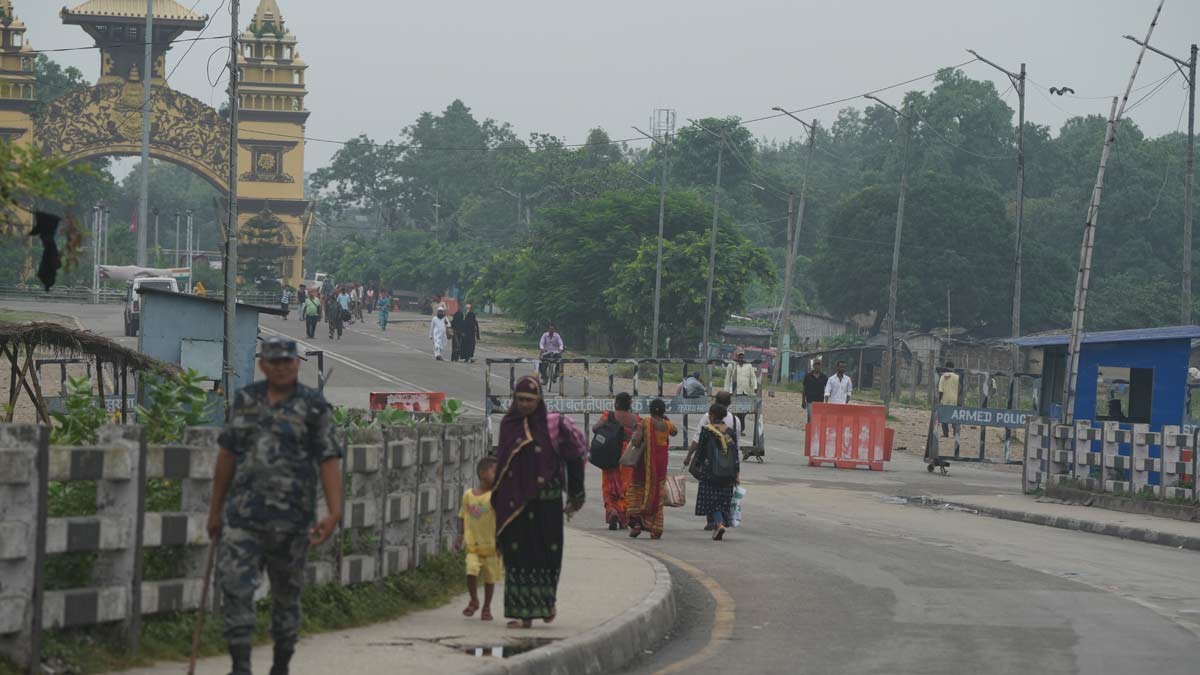Nepal Gen Z protests: Why India should adopt a ‘wait and watch’ approach
 People move past a security check post near the India-Nepal border, in Raxaul, Bihar | PTI
People move past a security check post near the India-Nepal border, in Raxaul, Bihar | PTI
As Nepal is reeling under intense anti-government protests led by the youth, experts suggest that New Delhi adopt a ‘wait and watch’ mode before making any intervention.
The Himalayan nation has plunged into a deep political crisis as the large-scale demonstrations in Kathmandu and many other cities forced Prime Minister K.P. Sharma Oli to resign.
At least two dozen people have lost their lives in the protests.
Describing the situation as “worrying”, several former diplomats remarked that India should carefully watch the unfolding developments in the neighbourhood.
"It comes on the trail of what happened in Sri Lanka and in Bangladesh. So, in that sense, there has been a series of incidents of instability in countries in the neighbourhood, which have led to the collapse of regimes and their leaders fleeing, etc. It is clearly not a healthy sign," Veteran diplomat Venu Rajamony told PTI.
"I think we have to wait for things to settle down...(but) we should watch this very carefully, because of all the implications it has for us and for our interests in Nepal," Rajamony said.
Similar views were echoed by Ashok Kantha, another senior diplomat, who said India doesn’t have a role at this point.
"My own experience has been that we should let the domestic process play out," Kantha said and warned that any intervention by New Delhi at this point would become counterproductive.
"So we have to first see and assess the situation," he told the news agency.
Both Kantha and Rajamony dismissed the insinuations that the crisis in Nepal should be looked at through the prism of India-China relations.
"I don't think China is a factor here,” said Rajamony, though he admitted that India’s neighbourhood is indeed in turmoil.
On Tuesday, New Delhi said it is closely monitoring the unfolding situation in the Himalayan country and hoped that all issues will be resolved through peaceful means.
"As a close friend and neighbour, we hope that all concerned will exercise restraint and address any issues through peaceful means and dialogue," the Ministry of External Affairs said in a statement.
India has also advised its citizens to defer travelling to Nepal until the condition stabilises.
Though the protests seem spontaneous and the trigger was the Oli government’s decision to ban certain social media sites, the anger over corruption and unemployment had been brewing among the young generation in the country for quite a while.
However, there are experts, like S.L. Kanthan, who strongly suspect the US's role in the unrest in Nepal, given the current regime’s strong leaning towards China.
"Standard playbook seen dozens of times around the world – young brainwashed people burning down Parliament and residences of top politicians; leaders likely fleeing the country, etc. Now watch an American puppet sworn in as the new leader – just like in Bangladesh, Pakistan," Kanthan said in an X post.
Earlier, former Bangladesh prime minister Sheikh Hasina, who was ousted from her post following the massive agitation in the country, had accused the US of orchestrating her removal from power.
Hasina claimed that her refusal to allow a US airbase on St Martin's Island had frustrated America, which has long been wary of increasing Chinese influence in the Bay of Bengal.
India